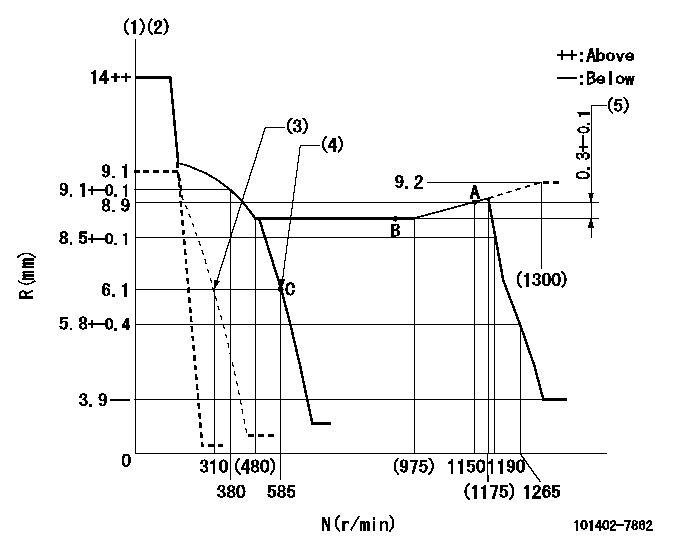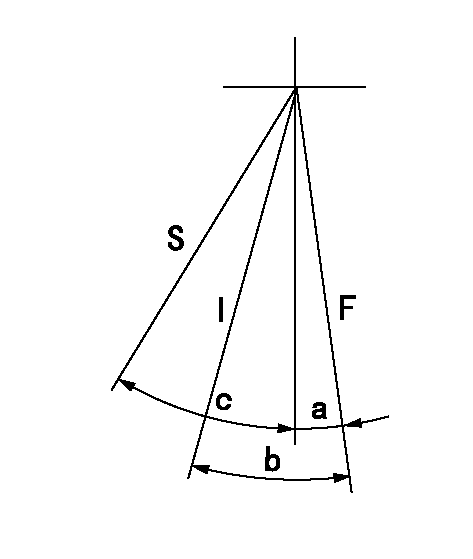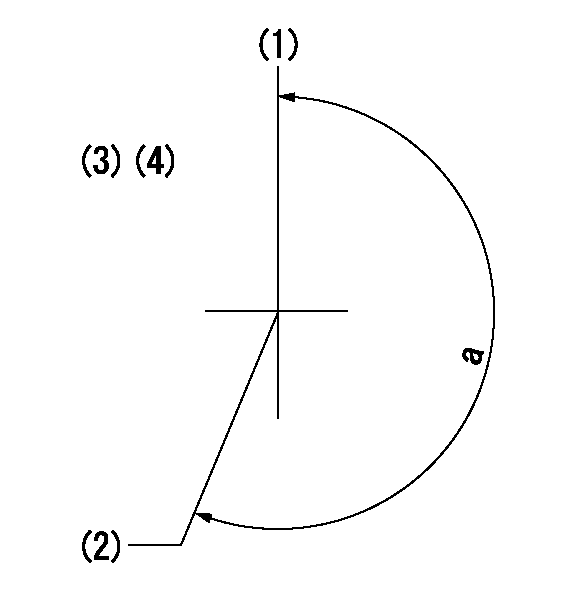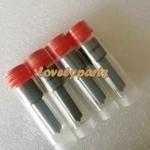Information injection-pump assembly
BOSCH
9 400 612 351
9400612351
ZEXEL
101402-7862
1014027862
ISUZU
8972874772
8972874772

Rating:
Service parts 101402-7862 INJECTION-PUMP ASSEMBLY:
1.
_
5.
AUTOM. ADVANCE MECHANIS
6.
COUPLING PLATE
8.
_
9.
_
11.
Nozzle and Holder
8-97211-280-0
12.
Open Pre:MPa(Kqf/cm2)
18.1{185}
15.
NOZZLE SET
Cross reference number
BOSCH
9 400 612 351
9400612351
ZEXEL
101402-7862
1014027862
ISUZU
8972874772
8972874772
Zexel num
Bosch num
Firm num
Name
Calibration Data:
Adjustment conditions
Test oil
1404 Test oil ISO4113 or {SAEJ967d}
1404 Test oil ISO4113 or {SAEJ967d}
Test oil temperature
degC
40
40
45
Nozzle and nozzle holder
105780-8140
Bosch type code
EF8511/9A
Nozzle
105780-0000
Bosch type code
DN12SD12T
Nozzle holder
105780-2080
Bosch type code
EF8511/9
Opening pressure
MPa
17.2
Opening pressure
kgf/cm2
175
Injection pipe
Outer diameter - inner diameter - length (mm) mm 6-2-600
Outer diameter - inner diameter - length (mm) mm 6-2-600
Overflow valve
131424-0820
Overflow valve opening pressure
kPa
127
107
147
Overflow valve opening pressure
kgf/cm2
1.3
1.1
1.5
Tester oil delivery pressure
kPa
157
157
157
Tester oil delivery pressure
kgf/cm2
1.6
1.6
1.6
Direction of rotation (viewed from drive side)
Left L
Left L
Injection timing adjustment
Direction of rotation (viewed from drive side)
Left L
Left L
Injection order
1-3-4-2
Pre-stroke
mm
2.6
2.55
2.65
Beginning of injection position
Drive side NO.1
Drive side NO.1
Difference between angles 1
Cal 1-3 deg. 90 89.5 90.5
Cal 1-3 deg. 90 89.5 90.5
Difference between angles 2
Cal 1-4 deg. 180 179.5 180.5
Cal 1-4 deg. 180 179.5 180.5
Difference between angles 3
Cyl.1-2 deg. 270 269.5 270.5
Cyl.1-2 deg. 270 269.5 270.5
Injection quantity adjustment
Adjusting point
A
Rack position
8.9
Pump speed
r/min
1150
1150
1150
Average injection quantity
mm3/st.
55
54
56
Max. variation between cylinders
%
0
-2.5
2.5
Basic
*
Fixing the lever
*
Injection quantity adjustment_02
Adjusting point
C
Rack position
6.1+-0.5
Pump speed
r/min
585
585
585
Average injection quantity
mm3/st.
10
8
12
Max. variation between cylinders
%
0
-15
15
Fixing the rack
*
Test data Ex:
Governor adjustment

N:Pump speed
R:Rack position (mm)
(1)Target notch: K
(2)Tolerance for racks not indicated: +-0.05mm.
(3)Set idle sub-spring
(4)Main spring setting
(5)Rack difference between N = N1 and N = N2
----------
K=11 N1=1150r/min N2=900r/min
----------
----------
K=11 N1=1150r/min N2=900r/min
----------
Speed control lever angle

F:Full speed
I:Idle
S:Stop
----------
----------
a=5deg+-5deg b=19deg+-5deg c=31deg+-3deg
----------
----------
a=5deg+-5deg b=19deg+-5deg c=31deg+-3deg
Stop lever angle

N:Pump normal
S:Stop the pump.
(1)No return spring
----------
----------
a=11.5deg+-5deg b=53deg+-5deg
----------
----------
a=11.5deg+-5deg b=53deg+-5deg
Timing setting

(1)Pump vertical direction
(2)Position of gear mark 'W' at No 1 cylinder's beginning of injection
(3)B.T.D.C.: aa
(4)-
----------
aa=11deg
----------
a=(210deg)
----------
aa=11deg
----------
a=(210deg)
Information:
(Diagnosis With Chassis Dynamometer)
1. Preparation of vehicle for fuel consumption test (consult dynamometer manufacturer's operating instructions for specific details on correct operation). Always perform the Primary Engine Test procedure before vehicle is installed on chassis dynamometer.a. Place vehicle on the chassis dynamometer. Tie the vehicle in a way that will not add any load to the drive wheels. Do not pull wheels down into dynamometer drive rolls.Check the radiator coolant level, crankcase oil level, tire pressure, tire condition, remove rocks from the tire tread and connect exhaust system.
Recapped tires should be run on a chassis dynamometer only at the customer's own risk.
b. The maximum acceptable fuel rate must be calculated for the customer's engine by use of the formula that follows: Find the rated brake specific fuel consumption (lb-bhp/hr) from the Fuel Setting And Related Information Fiche and add 0.25 mm (.010 in) manufacturing tolerance. Multiply this value by the advertised engine horsepower (plus 3% manufactures tolerance) and divide by the density of the fuel (lbs/gal).c. Calculate the allowable limitt that the customer can expect from his engine and present these figures to him. Caterpillar engines are rated with the conditions that follow: Barometric pressure = 747 mm (29.4 in) of mercuryInlet air temperature = 29°C (85°F) at air cleaner inletFuel gravity = API gravity of 35 at 16°C (60°F)Measure and record these variables.2. Operate vehicle at 60% of rated speed with moderate load until oil and coolant temperatures reach their normal range for operation.
If there is a heavy vibration, drive shaft whip, tire bounce, etc., do not continue with dynamometer test until cause of the problem is corrected. Engines that have had new internal parts installed should be operated on a run-in schedule before operation at full load.
Put transmission in direct gear and the differential in the highest speed ratio. Operate vehicle at maximum engine speed and increase chassis dynamometer load until a speed of 50 rpm less than rated speed is reached (continuity light should be on). Maintain this speed for one minute and record the engine speed, wheel horsepower and fuel rate.3. If the fuel rate and the wheel horsepower are both acceptable, then the engine is not the cause of the complaint, or the complaint is not valid. Refer to section Problem With Vehicle Or Vehicle Operation.4. If the wheel horsepower is low, regardless of how the fuel rate measures, refer to the Low Power Troubleshooting Chart. The low power problem must be corrected first.5. If the fuel rate and wheel horsepower are both too high, check the set point (balance point) of the engine (speed at which the load stop pin just touches the torque spring or stop bar). At this point the continuity light should flicker (go off and on dimly).If the set point (balance point) is high, the high idle will have to be decreased to lower the set point (balance point) to the correct rpm (point at which the continuity light just comes on). If the set point (balance
1. Preparation of vehicle for fuel consumption test (consult dynamometer manufacturer's operating instructions for specific details on correct operation). Always perform the Primary Engine Test procedure before vehicle is installed on chassis dynamometer.a. Place vehicle on the chassis dynamometer. Tie the vehicle in a way that will not add any load to the drive wheels. Do not pull wheels down into dynamometer drive rolls.Check the radiator coolant level, crankcase oil level, tire pressure, tire condition, remove rocks from the tire tread and connect exhaust system.
Recapped tires should be run on a chassis dynamometer only at the customer's own risk.
b. The maximum acceptable fuel rate must be calculated for the customer's engine by use of the formula that follows: Find the rated brake specific fuel consumption (lb-bhp/hr) from the Fuel Setting And Related Information Fiche and add 0.25 mm (.010 in) manufacturing tolerance. Multiply this value by the advertised engine horsepower (plus 3% manufactures tolerance) and divide by the density of the fuel (lbs/gal).c. Calculate the allowable limitt that the customer can expect from his engine and present these figures to him. Caterpillar engines are rated with the conditions that follow: Barometric pressure = 747 mm (29.4 in) of mercuryInlet air temperature = 29°C (85°F) at air cleaner inletFuel gravity = API gravity of 35 at 16°C (60°F)Measure and record these variables.2. Operate vehicle at 60% of rated speed with moderate load until oil and coolant temperatures reach their normal range for operation.
If there is a heavy vibration, drive shaft whip, tire bounce, etc., do not continue with dynamometer test until cause of the problem is corrected. Engines that have had new internal parts installed should be operated on a run-in schedule before operation at full load.
Put transmission in direct gear and the differential in the highest speed ratio. Operate vehicle at maximum engine speed and increase chassis dynamometer load until a speed of 50 rpm less than rated speed is reached (continuity light should be on). Maintain this speed for one minute and record the engine speed, wheel horsepower and fuel rate.3. If the fuel rate and the wheel horsepower are both acceptable, then the engine is not the cause of the complaint, or the complaint is not valid. Refer to section Problem With Vehicle Or Vehicle Operation.4. If the wheel horsepower is low, regardless of how the fuel rate measures, refer to the Low Power Troubleshooting Chart. The low power problem must be corrected first.5. If the fuel rate and wheel horsepower are both too high, check the set point (balance point) of the engine (speed at which the load stop pin just touches the torque spring or stop bar). At this point the continuity light should flicker (go off and on dimly).If the set point (balance point) is high, the high idle will have to be decreased to lower the set point (balance point) to the correct rpm (point at which the continuity light just comes on). If the set point (balance
